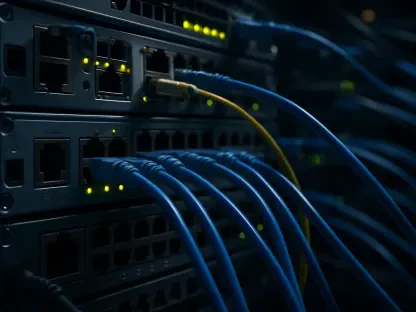In an era where the telecom industry is rapidly evolving, Axiata Group, a prominent conglomerate in Southeast and South Asia, stands at the forefront of a groundbreaking shift by aiming to become an AI-native telco. With a vast subscriber base exceeding 175 million through major operators like Dialog, XLSmart, CelcomDigi, and Robi, the company is betting big on artificial intelligence (AI) and autonomous networks (ANs) to redefine operational efficiency and financial performance. This ambitious journey, encapsulated in its A3 (Axiata Autonomous Networks and AI) strategy, promises transformative potential but is not without significant obstacles. From navigating vendor limitations to addressing data complexities and talent shortages, Axiata’s path reflects broader industry challenges in embracing digital innovation. As the telecom sector increasingly leans toward automation and intelligence, understanding the intricacies of this transformation offers valuable insights into what lies ahead for global players in this competitive landscape.
Driving Efficiency Through AI Innovation
Axiata’s vision to integrate AI into its core operations is fueled by the potential for substantial financial improvements, with estimates suggesting a 20-30% boost through optimized network management. This approach, led by insights from Thomas Hundt, the group chief business and technology officer, focuses on smarter capital expenditure (CapEx) allocation and maximizing asset value through intelligent planning. The A3 Network Architecture, a cornerstone of this strategy, emphasizes openness, programmability, and scalability while aligning with TM Forum/Open Digital Architecture (ODA) standards. Already, practical applications such as anomaly detection, energy-saving measures, and digital twins for infrastructure like towers demonstrate early successes. These initiatives highlight a proactive stance in leveraging technology to streamline operations, setting a benchmark for how AI can reshape traditional telecom frameworks into more agile, cost-effective systems that prioritize long-term sustainability.
Beyond initial deployments, Axiata is setting ambitious timelines to further embed AI-driven solutions, with plans to implement Service Management and Orchestration (SMO) across its operations by the end of next year. Supported by an emerging ecosystem of rApps, which are poised to replace outdated self-organizing networks (SONs), this move signals a shift toward fully autonomous systems. The focus on SMO reflects a broader goal of creating networks that can self-manage and adapt in real-time, reducing human intervention while enhancing service reliability. This progression is not merely about adopting new tools but represents a fundamental rethinking of network infrastructure to meet rising consumer expectations and data demands. As these technologies mature, they could position Axiata as a leader in operational efficiency, provided the integration remains seamless and aligned with strategic objectives across diverse markets.
Navigating Vendor and Data Challenges
One of the most pressing hurdles for Axiata lies in overcoming vendor resistance, a barrier that threatens to slow down its AI-native aspirations. Some vendors maintain restrictive “data black boxes,” limiting access to essential information needed for AI integration. The company has taken a resolute stand against such practices, with leadership making it clear that non-compliant vendors will not have a place in their future ecosystem. This firm policy underscores a commitment to transparency and control over critical data streams, which are vital for building intelligent, responsive networks. Without open collaboration from technology partners, the risk of delayed innovation looms large, potentially undermining the pace at which Axiata can roll out its transformative solutions across its extensive regional footprint.
Equally daunting is the challenge of data management, where the creation of a unified “data ocean” remains a complex endeavor. This concept involves integrating network, customer, and telemetry data in near real-time to unlock monetization opportunities like hyper-personalization. However, achieving this without spiraling costs requires sophisticated orchestration and robust infrastructure, areas where gaps still exist. The ability to harness vast datasets effectively is pivotal for tailoring services to individual needs, yet the technical and financial demands of such systems pose a significant test. If not addressed, these data-related intricacies could hinder the full realization of AI’s potential, leaving untapped value on the table while competitors race to refine their own digital capabilities in this fast-evolving sector.
Tackling the Talent Gap in Telecom Transformation
A critical yet often overlooked obstacle in Axiata’s journey is the scarcity of skilled talent capable of driving AI and telecom convergence. Expertise in both domains is rare, particularly in markets where educational systems may not yet prioritize such specialized training. Leadership within the company acknowledges that without the right people, even the most advanced strategies risk falling short. Addressing this gap demands significant investment in postgraduate education and skill development programs tailored to the unique needs of the industry. Building a workforce equipped to handle AI-driven networks is not just a short-term fix but a long-term necessity to ensure that technological advancements translate into tangible operational gains across diverse regions.
Compounding this challenge is the need to foster a culture of continuous learning within the organization to keep pace with rapid advancements in AI and autonomous systems. Axiata’s enterprise transformation program, Axiata AI, places emphasis on people as one of its four key pillars, alongside data infrastructure, use case development, and governance. With around 50 operational AI use cases already in play, the demand for qualified professionals to manage and expand these initiatives is urgent. Bridging this talent divide requires not only internal upskilling but also strategic partnerships with academic institutions and tech communities. Such efforts, while resource-intensive, are essential to sustaining momentum and ensuring that human capital aligns with the ambitious technological roadmap laid out for the coming years.
Reflecting on Strategic Pathways Forward
Looking back, Axiata Group embarked on a visionary path with its A3 strategy, confronting a landscape where AI and autonomous networks promised unprecedented efficiency but demanded equally unprecedented resolve to overcome systemic barriers. The challenges of uncooperative vendors, intricate data orchestration, and a persistent talent shortage tested the company’s determination at every turn. Yet, through a structured focus on transparency, infrastructure development, and human capital investment, strides were made to position the organization as a potential frontrunner in the telecom sector’s digital evolution. For sustained success, continued innovation remained paramount, alongside strategic collaborations that could ease vendor tensions and bolster data capabilities. Moreover, prioritizing scalable training initiatives offered a way to build a resilient workforce. These actionable steps, rooted in lessons from past efforts, paved a pragmatic route toward fully realizing the transformative power of AI in telecom operations.









